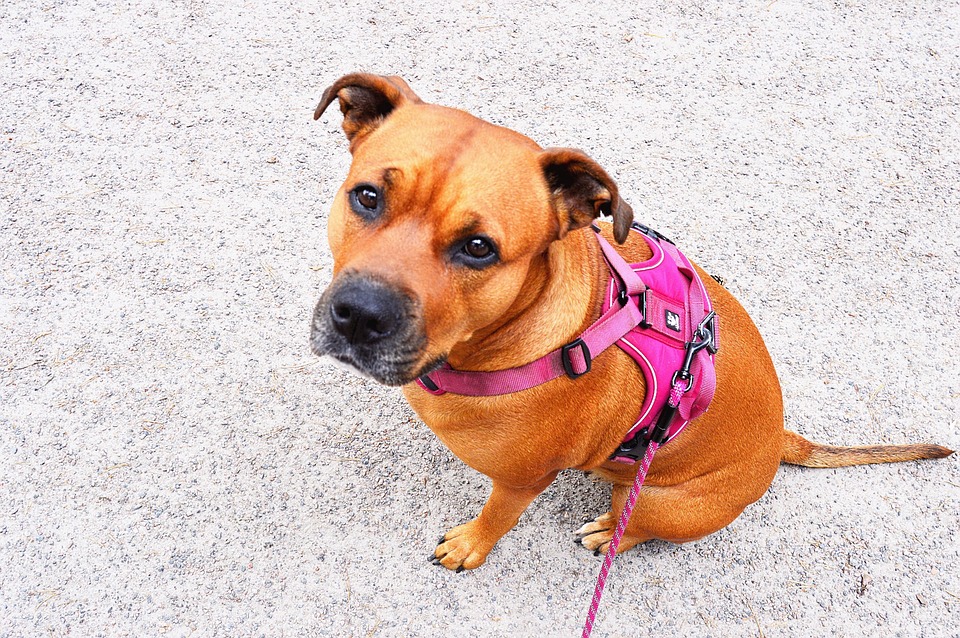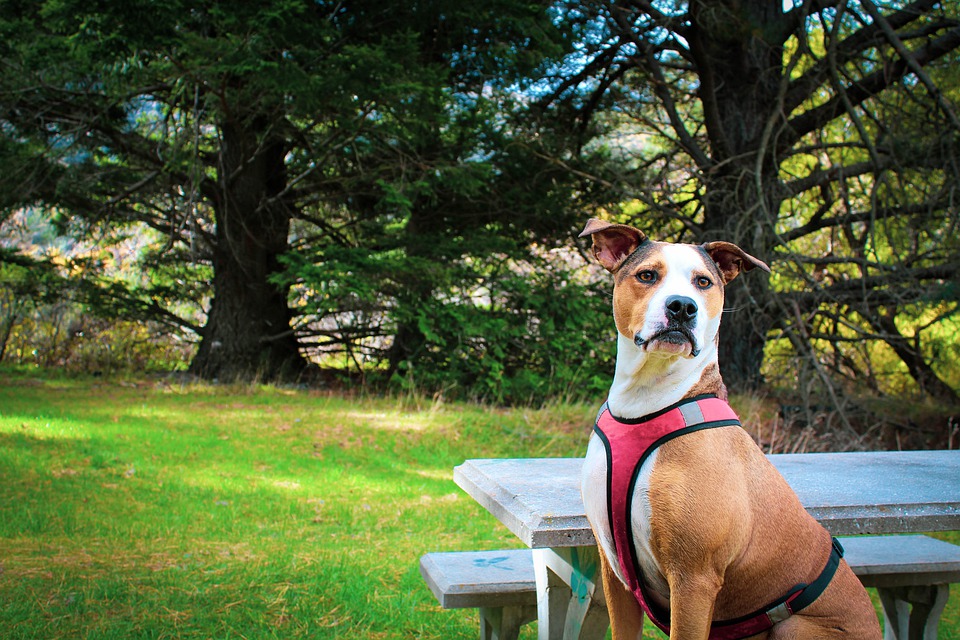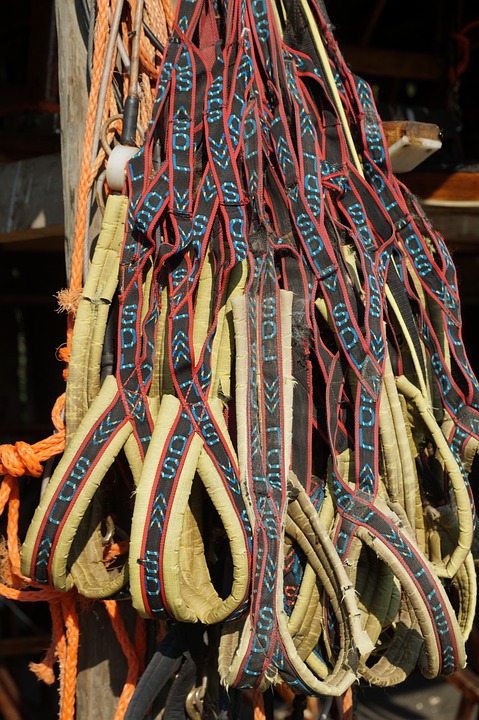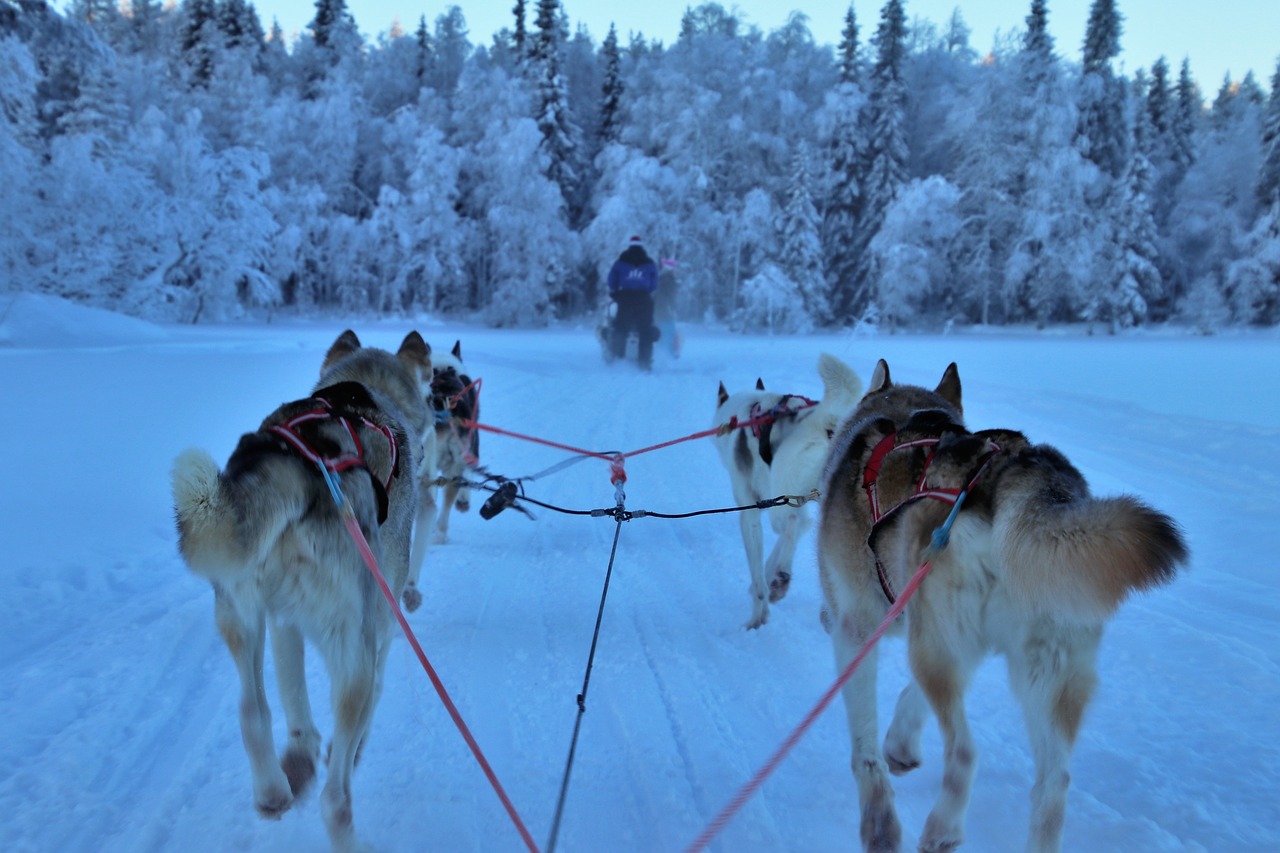On collars and harnesses
The question on whether a collar or a harness is better for your dog is a much-debated one. To say it diplomatically, both sides have their points. To be able to make a well-informed decision that is right for your dog, we’re going to take a look at both options with their respective pros and cons.
Collars

Collars are the simplest and most comfortable option for your dog, provided that you’ve trained it well. A dog that reliably strolls along next to you and doesn’t pull on the leash constantly is a suitable candidate.
When choosing a collar, the three most important aspects are size, fit, and the quality of the material.
The bigger your dog is, the wider the collar should be to better distribute the pressure on its neck. Smaller dogs as well as dogs with short necks should have a thinner collar so they can move their heads properly.

To make sure that the collar is not so tight as to choke your dog, while still being tight enough to prevent it from slipping out, the fit has to be right. A rule of thumb is to leave two fingers worth of space between your dog’s neck and the collar.
Lastly, apart from lasting longer, high quality collars guarantee your dog’s safety. Look for sturdy clasps and buckles made of hard plastic or metal, that are properly sewn in.
Choke chains, or any kind of collar that inflicts pain on your dog are absolutely not to be used. Thankfully, they are banned or in the process of getting banned in more and more countries, slowly making this cruel practice a thing of the past.
Harnesses
While a collar is generally the easiest option to use on walks and the like, there are some occasions when a harness is safer. If your dog is a constant leash-puller, or easily anxious and frightened, you can lessen the risk of strain or injury on its neck by opting for a harness. Harnesses distribute the pressure more evenly throughout the dog’s body and offer you more control as well. For that reason, they’re a good fit for puppies that aren’t leash-trained yet, as well as for hikes, where you might need to give your dog some assistance on tricky terrain. A harness is also the only option when you use a seat belt for securing your dog during car rides, as it prevents choking in case of a collision.

Finding the right harness for your dog can be quite a challenge, as dogs come in endless shapes and sizes, so there is no universal fit. There is the (pricier) option of customizing a harness for your dog, which will guarantee that it matches its build perfectly. If you decide to go for a store-bought harness, have a professional, like a vet or a dog trainer, check whether or not it fits properly.
The reason why this is so important is that an ill-fitting harness will do more harm than good. A harness that is too loose will make it easy for your dog to wind out, especially in situations where it’s excited or anxious, and as a result, prone to ignoring your commands.
A harness that is too tight will not only restrict a dog’s movement, but can further result in injuries. Often overlooked and noticed too late, it can cause chafing (especially behind the elbows), which can lead to irritation and even open wounds.

Another thing to consider when choosing a harness is whether or not it allows your dog to move its shoulder blades freely. The 2011 Jena study on the locomotion of dogs has found that this part of a dog’s anatomy plays a more important role in its movement than previously thought. The shoulder blades should be unobstructed when your dog is in motion, so the straps of the harness and their position on your dog’s body are what you need to look at most closely.
What harness to pick?
Picking the right harness for your dog is a challenge in and of itself, and the topic deserves its own blog post, so we’ll not be getting into too much detail here. There is one easy distinction to be made though: that between harnesses for daily use and those for specific sporting activities.

For your everyday activities, like walks, runs, or a hike, you’ll want to use a harness that allows you to better guide and control your dog. These harnesses usually have a strap running around your dog’s torso, with an additional one around its neck or across the chest and the leash clipped in at the centre of your dog’s back. Some models also have a handle on top, allowing you to closely guide your dog through stressful situations.
If you’re planning on doing sporting activities, where your dog plays a more active part, or is supposed to pull ahead, its joints and back will benefit from a harness that distributes the pressure evenly and is specifically designed to offer additional support, like the X-Back harness for example. With a bit of research and a consultation with your vet, you’ll find just what you’re looking for.

By taking your dog’s training and behaviour into account, as well as knowing what the collar or harness will be used for, you’ll be able to decide which option suits your dog and its needs best. It is also not a mistake to seek multiple opinions on this topic and the expertise of a good dog trainer and/or veterinarian for your individual situation and dog. With that being said, there’s nothing to keep you from enjoying your time outside together.